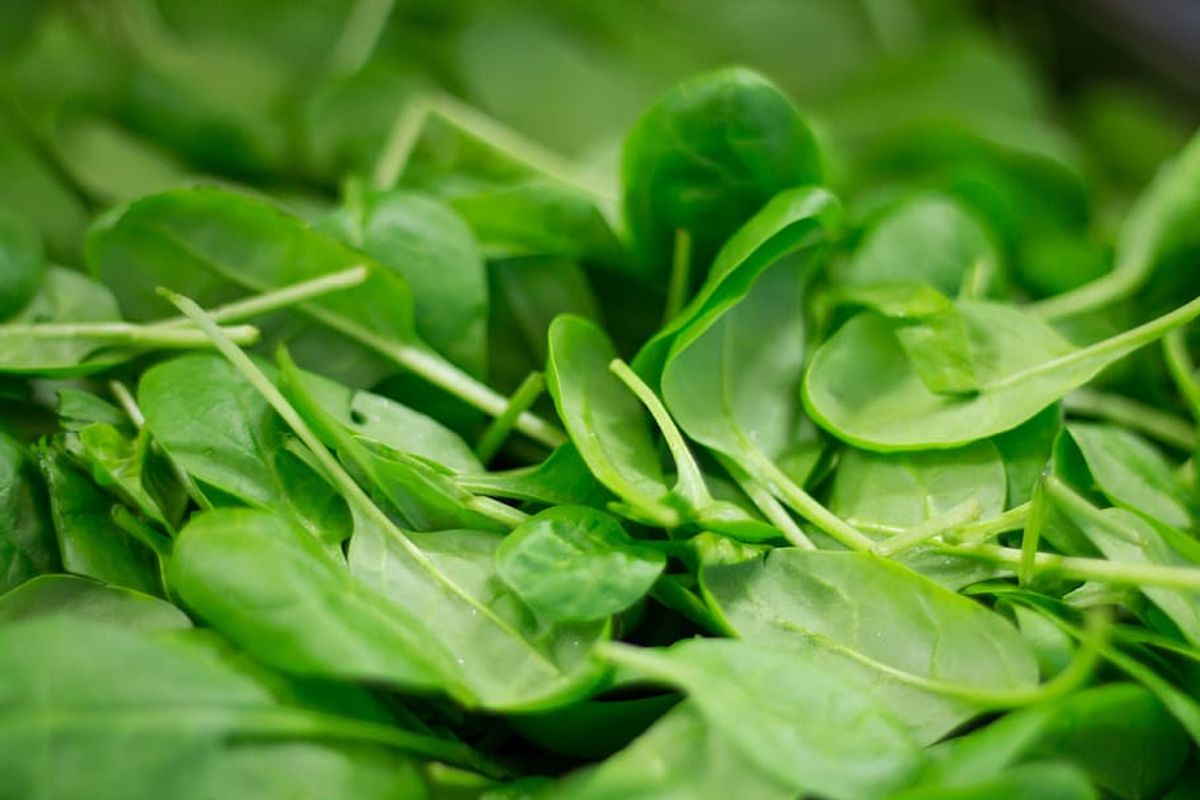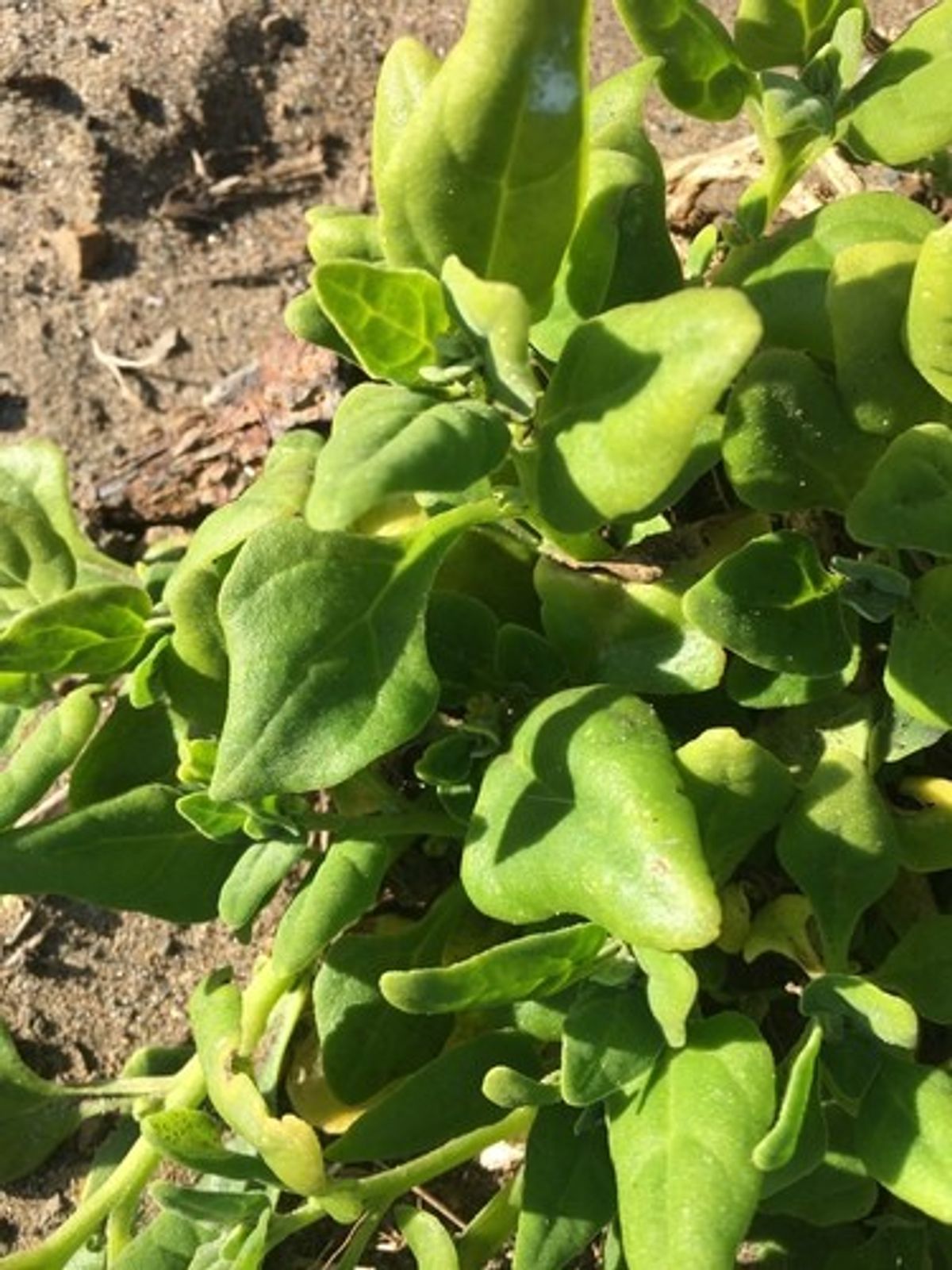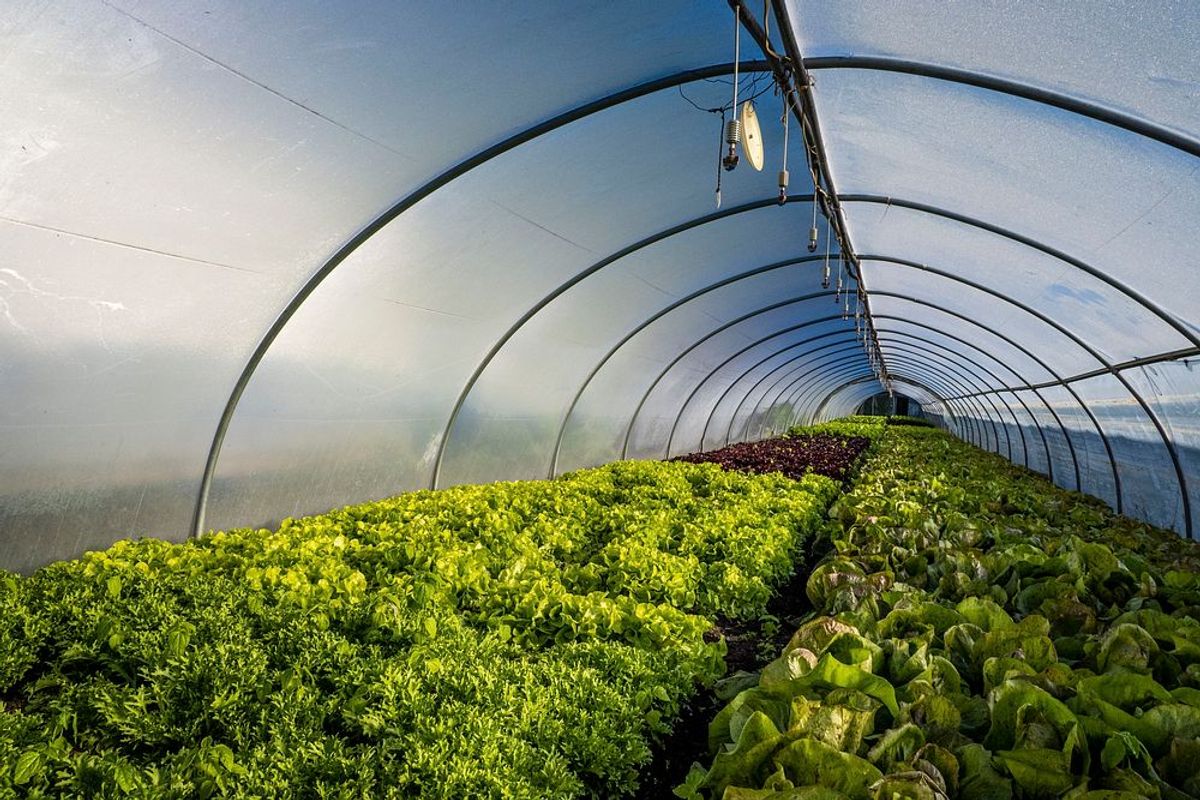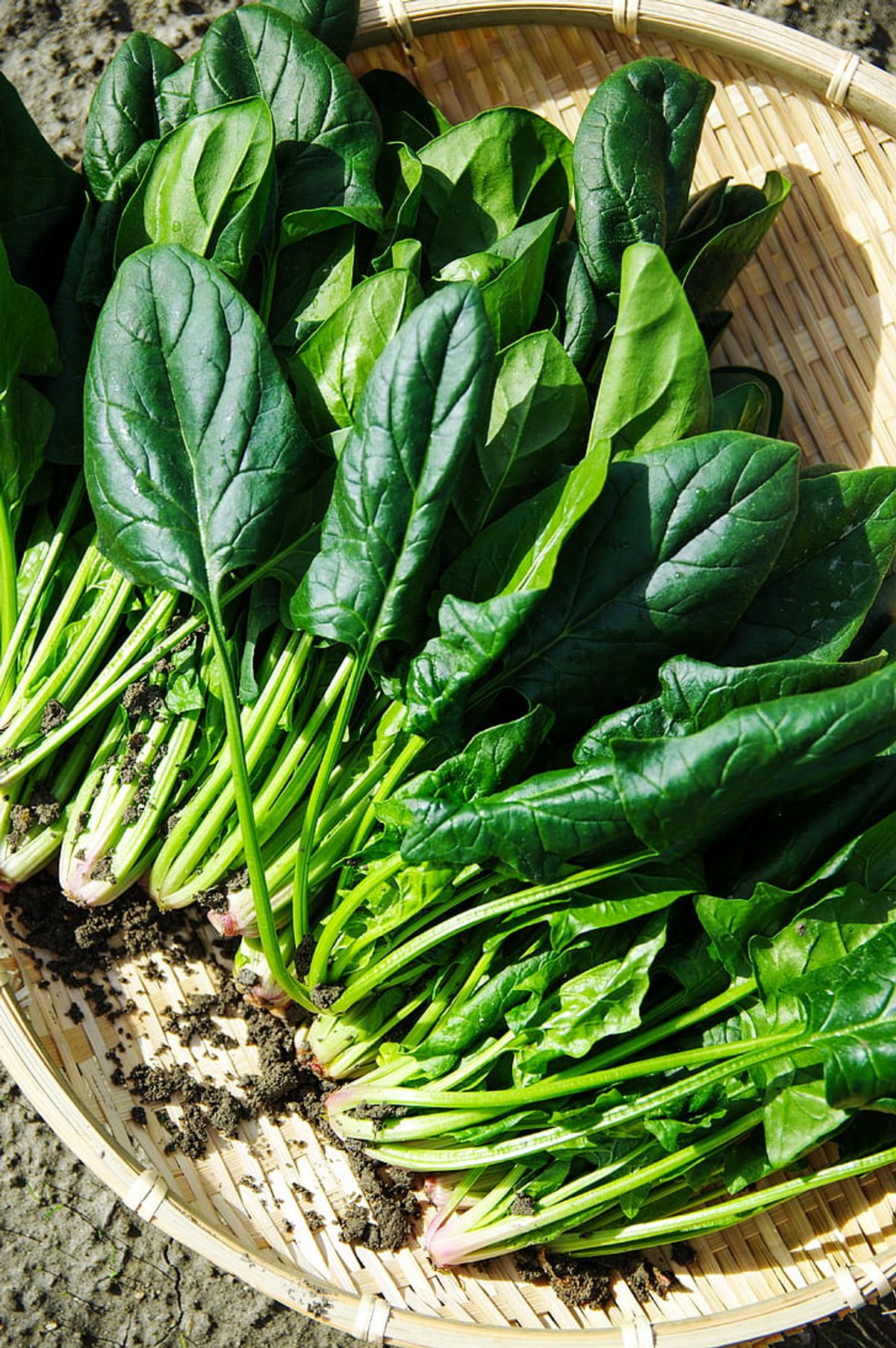Spinach is a nutrient-rich leafy green vegetable that thrives in the right conditions. To ensure a successful spinach crop, it is essential to choose the right variety, prepare the soil properly, provide optimal growing conditions, and effectively manage pests and diseases. By following these tips, you can enjoy a bountiful harvest of fresh and healthy spinach.
Table of Contents for Growing Spinach
Key Takeaways
- Choose spinach varieties suitable for your climate to ensure successful growth.
- Test soil pH levels before planting spinach to create a nutrient-rich environment.
- Provide spinach with adequate sunlight exposure for optimal growth and development.
- Use natural remedies for pest control in spinach to avoid harmful chemicals.
- Maintain consistent temperature and proper watering techniques to promote healthy spinach plants.
Choosing the Right Spinach Variety

Factors to Consider
When selecting the right spinach variety for your garden, several key factors must be taken into account to ensure a successful harvest. Climate adaptability is crucial, as some varieties thrive in cooler temperatures while others are more heat-tolerant. Soil type also plays a significant role; certain spinach varieties prefer sandy loam over clay.
Seed maturity time is another important consideration. Gardeners should choose a variety that will reach maturity within their growing season. Here’s a quick reference list to help you evaluate the best spinach variety for your needs:
- Climate compatibility
- Soil preference
- Maturity time
- Disease resistance
Remember, the right variety can make a significant difference in both the yield and quality of your spinach crop. Selecting a variety that is resistant to common diseases can save a lot of time and effort in pest and disease management later on.
Best Varieties for Different Climates
Selecting the right spinach variety is crucial for a successful harvest, especially when considering the climate of your region. Cooler climates tend to favor hardy varieties that can withstand frost, such as ‘Bloomsdale Long Standing’ and ‘Giant Winter’. In contrast, warmer regions may benefit from heat-tolerant types like ‘New Zealand Spinach’ and ‘Malabar Spinach’, which are not true spinaches but perform well in hot conditions.
For those looking to extend their growing season, some varieties have shown exceptional performance. Our top general favorite is Acadia, although Reflect does better outdoors overwinter. These varieties are not only robust but also offer excellent flavor and texture.
It’s important to note that local adaptation can play a significant role in spinach performance. Gardeners should consider conducting their own variety trials to find the best fit for their specific environment.
Here’s a quick reference list of spinach varieties suited for different climates:
- Cool Temperate Climates: ‘Bloomsdale Long Standing’, ‘Tyee’, ‘Reflect’
- Warm Temperate Climates: ‘Catalina’, ‘Emu’, ‘Acadia’
- Hot Climates: ‘New Zealand Spinach’, ‘Malabar Spinach’
Where to Purchase Quality Seeds
Securing high-quality seeds is crucial for a successful spinach crop. Local nurseries and garden centers often provide a selection of seeds suited to your regional climate. For a wider variety, online retailers and seed catalogs offer extensive options, including heirloom and organic seeds.
When shopping online, look for reputable sources with positive reviews and a commitment to seed purity. Everwilde Farms is one such retailer, known for their Viroflay spinach seeds, which are ideal for fall or spring planting. Here’s a testimonial from a satisfied customer:
A great variety for the fall or spring, Viroflay spinach can grow up to 2 feet in diameter.
Remember to check the seed packet for germination rates and plant hardiness to ensure you’re getting the best quality for your garden.
Preparing the Soil for Spinach Growth

Testing Soil pH Levels
The pH level of the soil is a critical factor for the healthy growth of spinach. Spinach thrives in slightly acidic to neutral soil, with an ideal pH range of 6.0 to 7.0. Testing your soil’s pH is the first step in ensuring that your spinach plants have the best environment to grow.
Spinach plant growth is sensitive to soil acidity. A study titled ‘Spinach plant growth responses to nutrient solution pH 4.0, 4.5, 5.0’ suggests that spinach prefers a soil pH that is not too acidic. If the pH is too low, it can be raised by adding lime to the soil. Conversely, if the soil is too alkaline, sulfur can be used to lower the pH.
Maintaining the correct pH balance is essential for the absorption of nutrients from the soil.
Here is a simple guide to adjusting soil pH:
- Test the soil pH using a home testing kit or by sending a sample to a laboratory.
- If the pH is below 6.0, add garden lime to raise it.
- For pH levels above 7.0, mix in garden sulfur to lower it.
- Retest the pH after amendments to ensure it is within the optimal range for spinach.
Adding Organic Matter for Nutrient-Rich Soil
Incorporating organic matter into the soil is a pivotal step in preparing a fertile bed for spinach. Compost, aged manure, and leaf mold not only enrich the soil with essential nutrients but also improve its structure and water retention capabilities.
Compost is particularly beneficial as it introduces beneficial microorganisms that aid in nutrient absorption. A balanced mix of green and brown materials ensures a nutrient-rich compost. Here’s a simple guide to what you can add:
- Green materials: Vegetable scraps, coffee grounds, fresh grass clippings
- Brown materials: Dry leaves, straw, cardboard
Ensuring that your soil is rich in organic matter can significantly boost the growth and health of your spinach plants.
Remember to mix the organic matter thoroughly into the top 6 to 8 inches of soil. This helps to create a uniform and aerated growing medium for the spinach roots to thrive in.
Creating Proper Drainage System
Ensuring your spinach has a proper drainage system is crucial for preventing root diseases and promoting healthy growth. Spinach roots are sensitive to waterlogging, which can lead to root rot and other issues. To facilitate adequate drainage, consider raising your garden beds or incorporating a slope to allow water to flow away from the plants.
Containers used for growing spinach should also have adequate drainage. Make sure there are drainage holes in the bottom of the container so that the spinach roots don’t sit in water. This simple step can make a significant difference in the health of your spinach crop.
A well-designed drainage system not only prevents overwatering but also ensures that nutrients are not washed away from the soil, maintaining a nutrient-rich environment for your spinach.
Remember, while spinach does need consistent moisture, it’s important to balance water input with proper drainage to avoid common pitfalls.
Optimal Growing Conditions for Spinach

Ideal Sunlight Exposure
Spinach thrives in conditions where it can receive full sun to partial shade. Proper sunlight exposure is crucial for maximizing the plant’s growth potential and nutrient content. However, too much direct sunlight, especially in warmer climates, can lead to bolting, where the plant flowers and goes to seed prematurely.
Spinach is versatile when it comes to sunlight, but the following guidelines can help ensure that your crop receives the right amount of light:
- Full sun in cooler climates to encourage robust growth.
- Partial shade in warmer regions to prevent overheating and bolting.
- Morning sunlight is preferable, as it is less intense than afternoon sun.
Consistent and appropriate sun exposure will lead to a more bountiful and nutritious spinach harvest. Adjusting the amount of light your spinach receives can make a significant difference in the quality of your crop.
Proper Watering Techniques
Maintaining the right moisture level is crucial for spinach, which thrives in consistently moist soil. Water your spinach plants to keep the soil evenly moist, but be careful not to overwater, as this can lead to root rot and other issues.
- Check the soil moisture by feeling the top inch of soil before watering.
- Water early in the morning to reduce evaporation and allow leaves to dry, minimizing disease risk.
- Use a soaker hose or drip irrigation to deliver water directly to the roots and avoid wetting the foliage.
Consistent watering is key to preventing bolting, where spinach plants mature and go to seed prematurely due to stress from fluctuating water levels.
Remember to adjust your watering schedule based on weather conditions and the stage of growth. Seedlings require more frequent watering to establish roots, while mature plants need less frequent but deeper watering to encourage strong root development.
Maintaining Consistent Temperature
Spinach thrives in cooler weather, making it essential to maintain a consistent temperature range for optimal growth. Keeping the temperature between 50-70 degrees Fahrenheit (10-21 degrees Celsius) ensures that spinach grows rapidly and produces tender, flavorful leaves.
To achieve this, gardeners can use a variety of methods:
- Mulching to regulate soil temperature
- Using row covers or shade cloth during hotter days
- Planting at the right time of year for your region
Consistent temperature not only affects growth rates but also impacts the nutritional quality of the spinach. Cooler temperatures tend to enhance the levels of certain nutrients like vitamin C and folate.
Remember, extreme temperature fluctuations can stress the plants, leading to bolting or poor development. Monitoring weather forecasts and being prepared to take action can help in maintaining the delicate balance required for a thriving spinach crop.
Pest and Disease Management in Spinach

Identifying Common Pests
Spinach crops can fall prey to a variety of pests, each capable of diminishing the health and yield of your plants. Identifying the culprits early is crucial for effective management and ensuring a bountiful harvest. One common adversary is the leaf miner, which leaves behind distinct trails on foliage.
- Aphids: These tiny pests can cause leaves to curl and stunt growth.
- Leaf Miners: Look for pale blotches or wandering trails on leaves.
- Slugs and Snails: They leave irregular holes and are active during the night or in wet conditions.
- Caterpillars: They can quickly defoliate plants if not controlled.
Vigilance is key in pest identification. Regularly inspect your spinach for signs of infestation, as early detection can make all the difference.
By familiarizing yourself with these pests and their signs, you can take timely action to protect your spinach. For instance, pale blotches or wandering trails on leaves are telltale signs that you’ve got leaf miners. Implementing appropriate control measures for each pest will contribute to a healthier, more productive spinach crop.
Natural Remedies for Pest Control
In the quest for a healthy spinach crop, natural remedies for pest control are invaluable. Aphids and mites, common adversaries in the garden, can be effectively managed with homemade solutions. One such remedy is the tomato leaf spray, which utilizes the alkaloids found in tomato leaves to deter these pests.
When applied correctly, natural sprays not only reduce pest populations but also minimize the impact on beneficial insects and the environment.
Here’s a simple recipe for creating your own tomato leaf spray:
- Collect leaves from your tomato plants.
- Soak the leaves overnight in water.
- Strain the mixture and add to a spray bottle.
- Apply to the affected areas of your spinach plants.
Remember to test the spray on a small area first to ensure it does not adversely affect the plant. Regular monitoring and application may be necessary for optimal results.
Preventive Measures for Disease Management
Preventing diseases in spinach crops begins with adopting a proactive approach to garden hygiene and crop rotation. Regularly inspecting plants for signs of distress and removing any diseased foliage can prevent the spread of pathogens. It’s essential to avoid overhead watering to minimize leaf moisture, which can foster fungal growth.
Crop rotation is a critical strategy in disease prevention. By alternating the types of crops planted in the same soil, you can disrupt the life cycles of soil-borne diseases. Here’s a simple rotation plan to follow:
- Year 1: Plant spinach
- Year 2: Plant a root crop (e.g., carrots or beets)
- Year 3: Plant a legume (e.g., beans or peas)
- Year 4: Return to leafy greens or a different family of vegetables
By maintaining a diverse garden ecosystem, you encourage beneficial organisms that can naturally keep disease pressures in check.
Finally, selecting disease-resistant spinach varieties and using quality, pathogen-free seeds are fundamental to a healthy crop. Ensure your seeds come from a reputable source and are certified disease-free.
Cultivating Zucchini: Tips for a Successful and Abundant Harvest
Step-by-Step to Growing Bell Peppers in Your Garden
Mastering the Art of Growing Carrots: Tips for a Bountiful Harvest


